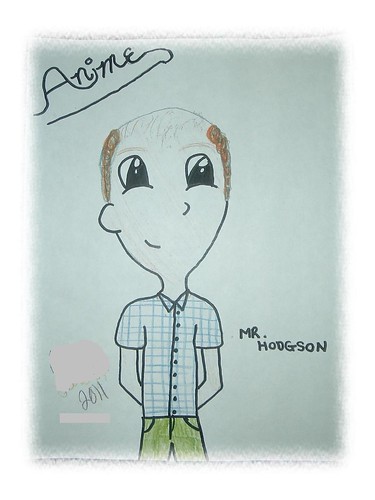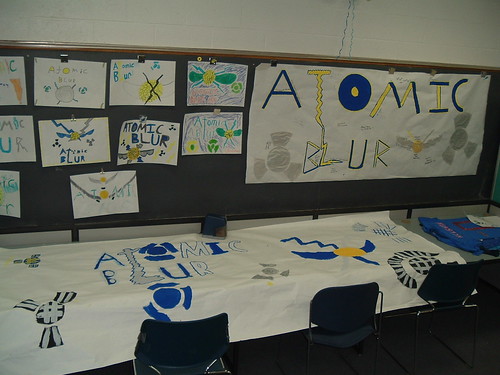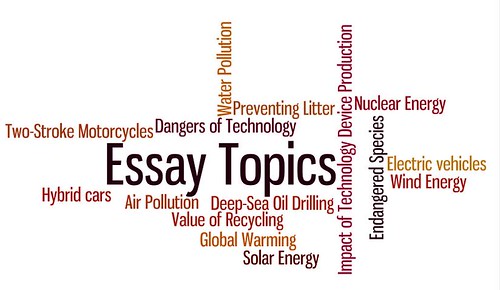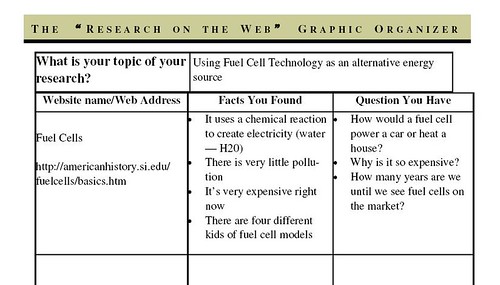
One of my students drew Anime versions of her four sixth grade teachers for their sixth grade yearbook. This one is of me. She did a great job, don’t you think?
Peace (with big anime eyes),
Kevin
To be honest, I thought Google Video had long ago gone away and become part of YouTube, so I was surprised yesterday to get an email from Google, letting me know that “Later this month, hosted video content on Google Video will no longer be available for playback.” A few years ago, we could no longer upload videos into Google Video and now playback is packing its doors.
For many years, I loved Google Video. It provided me with a relatively safe place to upload and share videos, and then embed them, with very little worries about students clicking back to an inappopriate site. I do remember when Google bought Youtube, and I figured, that would be it for Google Video. It took longer than I expected, but long ago, I made the shift over to Vimeo (which gives me much more flexibility on embedding, although I pay an annual fee).
Google is allowing us to download any videos from Google Video. By the end of the month, the videos will be gone and the site will disappear from the video landscape. As I was looking over the nearly 100 videos that I still have on Google Video, I had some nostalgia flashes around various projects during that time period, which began for me in 2006. I was just learning about video and about hosting video, and it was all experimental for me (maybe it still is).
Three of the videos are claymation stories that my three boys and I made here at home, as I was toying with how to bring stopmotion into the classroom. The stories were written by my oldest son and the movies were a collaborative venture by the family.
Although these videos will expire in about two weeks, here are some of the videos that I uncovered from my files:
Peace (in the last gasp of Google Video),
Kevin
There was a newsletter email in my box the other day from National Writing Project Executive Director Sharon Washington that began with the line that “We would like to share some good news.” I wondered, is this it? Has funding for the National Writing Project somehow been restored? Has all the lobbying in DC and the hundreds of blog posts and all of those phone calls finally made a bit of a difference?
Not really.
Funding is still gone in the latest budget and the “good news” is only that NWP and all of the other literacy groups that got stripped of federal support can now apply for some competitive grants, which the government has “graciously” set aside from its $3 billion in teacher-quality testing money for educational programs. That amount is apparently just one percent of the $3 billion.
Thanks a lot.
The funding bill (see summary of entire bill) also eliminates a number of other education programs, including:
- Educational Technology State Grants—$100 million.
- Literacy Through School Libraries—$19 million.
- Byrd Honors Scholarship Program—$42 million.
I know we are in the era of competitive spirit (ie, Race to the Top) as a push to enact positive change in struggling schools. It’s an era where “my” program has to beat “your” program in order to keep afloat from year to year. Survival requires lobbying, and political connections, and is anchored on other things that we classroom teachers don’t always “see” because we are too busy working on lesson plans, giving an extra hand to the struggling student or teaching, for goodness sake.
But I do wonder if the officials who set up these competitive elements realize that it may very well be our students — the most vulnerable population out there — who are most impacted. I look at the list of educational programs that are cut and I can’t help but think: so many of these initiatives are reaching under-served populations of students and struggling socio-economic communities, and now they are gone or in danger of disappearing.
What happens to those kids?
I’ve written and called my representatives about supporting NWP funding. Only one (Sen. Scott Brown) has responded to me — and not necessarily in a timely manner, either — and that is with an email that looks familiar to the one I got about six months ago from his office. Here is part of what he wrote:
Like you, I believe that every child deserves access to a quality education that allows them to become successful and active members of their community. As a parent, I recognize the positive impact that strong support systems and educational opportunities can have on children during their early developmental years …. I believe that federal, state, and local governments must continue to work together to protect the quality of education being provided to students while also developing additional efficiencies and cost-saving measures to respond to today’s tough fiscal environment. However, because of the trillions in debts and deficits we face, there are virtually no areas of the budget that are completely immune from reductions. — Sen. Scott Brown (R-Mass)
Which means, the cuts are continuing. Brace yourself.
Peace (in the frustration),
Kevin

For my students, today is one of those days they have been waiting for since kindergarten. Today, our sixth grade takes part in the Quidditch Championship, in which all four classes square off against each other on the gym floor for our version of the magical game (the video tutorial is here). It may be no surprise in how invested my kids are in this event, which consumes the entire school for the day (other grades come to watch the games underway, cheer for teams, make signs and posters, dance during intermission, etc.)
My job as the teacher, and coach, is to keep my students positive (even if we lose), foster good collaboration and communication amongst our class, remind them of the balance between wanting to win and being a gracious loser, and working hard. Some years, that is all harder than others. Not this year. Not with this class. They have been wonderful — supporting each other, very little complaining, coming together as a single team instead of 21 individual students.
I can’t say it is all roses. One student is missing a substantial part of the day because of consistent behavior difficulties. We’ve tried to work with this student all year, but impulsiveness is their downfall right now, despite multiple warnings and smaller consequences other than losing Quidditch. Which is too bad. For a student like this one, Quidditch is the kind of event they can thrive and excel at. But in the end, logical consequences had to come into play.
Our team name is Atomic Blur and as you can see by the picture, they have been working hard at developing posters that now hang in the gym for today’s events. We’re the blue team. Yesterday, my class chose a theme song for the team. Appropriately enough, it by the band Blur. The song — Song 2 — will be playing when they enter the gym for each of the games. Whoohoo ….
Wish us luck. We’re going to have noisy, chaotic fun today.
Peace (in the blur),
Kevin

We often “write into the day” to get our thoughts together. Yesterday, I had my students write an overview of the topic that will be the heart of their Environmental Science/Persuasive Essay project now slowly getting underway. (See some of the various topics they have chosen to write about in the Wordle above).
They had to answer the questions of:
As you might imagine with sixth graders, this last question stumped a lot of them. Who wouldn’t be against air pollution? Who wouldn’t want to save that little furry animal?
Their difficulties gave me a window again into how a good persuasive piece of writing acknowledges the opposing view and then uses that opposition to its advantage by turning it around on them. (ie, Air Pollution is beyond our ability to control and regulating manufacturing plants would lead to the loss of many jobs; the cost of saving that little furry animal might be enough to feed hundreds of struggling people and the habitat where that furry thing lives might provide resources for jobs, etc.)
We’re on vacation next week, and we play our huge Quidditch Tournament tomorrow (yikes!), so the next step here is use the Essay Map Graphic Organizer and sketch out some main ideas. Then, we put the project off to the side until we return from vacation.
By the way, I compiled some various science links and resources that they were using to do some basic inquiry around their topics.
Search Engines
Scientific Sites
Endangered Animals Sites
Peace (in the inquiry),
Kevin
Yesterday, I shared some of the handout materials that we are using for our Environmental Science/Persuasive Essay Project that my sixth graders are starting to embark upon. As we began some web-based research yesterday, I explained to them that I was assigning myself the project, too. And I am. As they work through their ideas, I am working through mine.
My intent is to make my thinking visible to them every step of the way — from these initial brainstorming/planning sessions to the writing of the piece to the creation of the media component that will accompany the essay at the end. I want to try to show them how writers work — the ups and the downs — and answer questions they have about my writing process, and share my work with them, just as I have them share their work with me and the class.
So, yesterday, I shared out my topic (Fuel Cell Technology as an alternative energy source) and walked them through how to use our graphic organizer on gathering information from websites. Although it is not a full-scale research project, they need to have some background knowledge in order to “make a case” for their persuasive ideas.
Here is what I shared with them:

Tomorrow, we will begin to use another graphic organizer to map out their essay. For many of them, this is the first large essay project they have encountered, and so we take it slowly, laying out daily expectations to make it manageable. A graphic organizer is invaluable to this project for many of my students, particularly those struggling writers.
Here is my Essay Map for a piece on Fuel Cell Technology:
Five Paragraph Essay Map – My Sample
Writing with my students is a powerful experience, and I wish more teachers would do it. I can’t remember any of my teachers actually writing with us or sharing their writing with us. It always made me wonder what kind of writers they were. It was as part of them was hidden from view.
My students appreciate the honesty (I tell them when I run into walls and I let them in on frustrations and successes), and I hope it provides a model for them in their own writing. The real dangers here are that you could embarrass yourself as a writer (I don’t worry about that but I acknowledge that some teachers do) and some students might seek to emulate you so completely that it feels as if they are a shadow writer. That’s why I picked Fuel Cells — not a single student knew what that was and there was no danger of a copycat writer. (Oh, another bonus: I get to learn more about an interesting alternative technology and my students will be learning, too, through my sharing of my work).
Peace (in the cells),
Kevin
You should have heard the collective groans last week when I told my sixth graders we were moving into an essay project. Yikes. But I explained (again) our progression over the last few months — from learning about the origins of words, to how words are used in sentences (parts of speech), to sentence structure and usage, to paragraph writing. The next logical step is now to develop an idea into an essay (and our standards-based report card requires me to do this anyway — the essay is its own line item.)
So, we are moving into a persuasive essay project in which students are choosing a science theme to write about.
Why science?
First of all, they are very interested in the world and its many issues, and a persuasive essay allows them a “voice” an important matter. Second, I am really working on writing across the curriculum ideas so that they don’t see writing as an isolated activity. Third, I want to have them create a multimedia aspect of their project (via Glogster). And fourth, I intend to publish as many of the essays and media posters as possible with The Voices on the Gulf, giving my students an authentic writing experience. I am also interested in extending the concept of the Voices on the Gulf site into other scientific areas. Some students might address the Gulf; others will be working on other topics.
Meanwhile, I am also working on my own project as a way to talk about my own writing process. My topic is about Fuel Cell Technology and its potential as an energy source in the future.
Curious about the assignment? Here is the handout package.
The Environmental Science/Persuasive Essay Project
Peace (in the planning, writing and publishing),
Kevin
![]()
This is a sort of follow-up post from Thursday’s TEP Conference here in Western Massachusetts. I wrote the other day about Alan November, and the second keynote was by Jim Moulton, who was one of the planners behind Maine’s 1-1 Laptop Initiative, is a former teacher, and is now is an educational consultant for Apple.
Moulton focused his talk around Maine’s laptop program, and he argued that putting devices in the hands of all middle school students has changed the ecology of the educational system in his state. This doesn’t mean that every element of teaching and learning has been transformed, but Moulton said that putting the tools of creativity in the hands of students, and their teachers, have established collaboration, audience and creativity has key components to many classrooms and libraries in the Maine school system.
While some worried that technology might replace teachers (or the need for good teachers), Moulton argued that it is, in fact, quite the opposite. The technology has opened up even more doors of opportunity for teachers to work with engaged students.
“The (technology) device drives a profound need for human interaction with kids. It’s a return to a Socratic method of teaching,” Moulton explained, and although he did not refer to the Digital Native/Digital Immigrant dichotomy, he is right in debunking the perception that young people “get” technology and know how to use it wisely.
The heart of Moulton’s talk was not about the devices, although he is now an Apple consultant in a state that has bought all Apple products (through a bidding process), but about the networks of connections of people that spring up around the technology, and how powerful those connections can be for teachers and students.
He cited examples that were born from the 1-1 initiative, such as regional technology integrators’ meetings to share best practices, teacher groups coming together to explore and plan curriculum, connections from schools to many other organizations (around science and history), partnerships with universities to support the technology learning and the students themselves. An annual conference at the end of the year brings together more than 1,000 students to share their work around technology with each other.
“We have the technology, but that’s not enough,” Moulton said. “It is about the social networks that spring up and the way we choose to leverage the unbelievable resources in our schools” for student learning and achievement.
In other words, it is not about the device. It is about the learning. He cited a recent ad campaign by Apple that seems to drive this home. (Remember, he is an Apple consultant now). The advertisement’s focus is that when technology becomes invisible, incredible thing are possible. At the risk of sounding like I am endorsing Apple, I wanted to share the ad Moulton referred to. Sure, it is selling the iPad, but the message is interesting.
Peace (in the invisibility cloak),
Kevin
I am continuing to think about the idea of gaming and how it might (or might not) fit in my curriculum. This summer, as part of our Western Massachusetts Writing Project SummerWrite, I will be leading a summer camp programming for middle school students around gaming and game design, and this morning, at the Conference on College Composition and Communication in Atlanta, I sat in on a session entitled “Leveling Up: Gee, Gaming an the Composition Classroom.”
Three smart Phd student presenters from Purdue University — Alex Layne, Jessica Kaiser, and Jessica Clements — talked about the idea of gaming from various angles. I imagine I was one of the only elementary teachers in the crowd, but I found it intriguing how these three are situating gaming from various stances.
Layden (“Gaming the System in a System of Games”) established the social nature of gaming and made the metaphor of the academic classroom as a game system in and of itself. She also railed against the concept of “gamification,” in which traditional learning activities are put into a new box with the idea of a “game” on it. Layden rightly noted that the idea of gamification comes from the marketing arm of the business world.
Gamification “…tricks students with cosmetic changes to make something more appealing. Students will see right through this,” she explained. Instead, educators should work to use the gaming lens to restructure the classroom experience for learners. Although she did not offer specifics on how this would be done (which would have been nice), she noted that, in some ways, “…a teacher and a dungeon master may not be all that different roles.”
Kaiser (“There’s Nothing Casual About This Gaming”) jumped into the divide that exists in the gaming world around hard-core games (those that fully immerse you in their worlds and which require hours of playing time to reach the end of the quest) and casual games (which take a few minutes to play but are often now very social in nature.) Kaiser noted that while casual games get scoffed at by some hard-core gaming fans, the majority of players of these games are women. Her talk turned on how some populations — women, minorities, etc. — can feel left out of the gaming worlds that are not designed for their interests.
Clements (“A Tale of Two Gamers”) offered up a more personal perspective, turning an inquiry lens on her own gaming experiences with her husband. She conducted a indepth research project into both of their histories around gaming and their views on gaming (which stemmed from them playing Mario Bros. on the Wii). Her idea was to look at how we view writing as a social practice and see if her own inquiry matched up.
What she concluded was quite opposite. While she is a strong academic writer, her own gaming preferences are for more solitary, competitive-driven experiences. Her husband, on the other hand, was not a strong academic writer (she says) but grew up as a very social gamer, and continues to be so today.
Clements adds that expectations of writers value the solitary person over the social group in most classrooms, but she wonders if gaming ideas might allow some struggling students to have another way into literacy practice.
It was all very interesting, and a lot to digest, and (as you might expect) very academic. It would have been nice to have seen or heard about more classroom experiences where gaming is at the center of learning, and what that has meant for the students. I guess that is another road of inquiry that I need to take.
Meanwhile, as I was getting ready to write this, I saw this video link about gaming and learning. Game scholar Constance Steinkuehler reflects on how gaming can matter, particularly teenage boys and literacy. She saw an afterschool program as a “third bridge” between school and games for the boys in her program.
Constance Steinkuehler from New Learning Institute on Vimeo.
Peace (in the games),
Kevin

Yesterday, at the first annual TEP (Technology in Education Partnership) Conference (tagline: A Conference for the West of Us, as conferences usually take place in the east of the state near Boston), Alan November was the keynote speaker. At times funny, sarcastic, optimistic and downtrodden by the state of education, November launched into an energetic discussion that certainly did its job: it got the crowd of technology leaders, school administrators and teachers talking and thinking.
He began with the critical question: who own the learning in our school? November argued that teachers do more of the work than students, and that the model has barely changed in the generations since public education became a backbone of our society. New technology has not revolutionized teaching practice, he said.
“We’ve bolted technology on top of a culture of learning that we have never questioned,” November said, and then urged us in the crowd to turn the tables on that notion. He then went into great detail about the concept of the Flipped Classroom, where teachers record lectures as pre-class homework and the use the class time for hands-on projects and learning. He shared some video from a Harvard professor doing research on the Flipped Classroom, but I could not help thinking: show me the Community College or the public high school, not just motivated Harvard kids.
November also said that the model of students working on isolated assignments, with teacher as sole audience, is out of sync with the learning styles of students. Instead, learning should be social, it should engage the lines of inquiry, and projects should allow students to “leave a legacy” for others behind them. The model now is that “you work all year and then, we throw out everything you did,” he mused.
Technology allows the building of legacies to happen, he said, and gave the example of a fanfiction site that has hundreds of thousands of young people writing stories. They write, get peer feedback, revise and publish to the world, but November said he was confronted by a teacher of one of these young writers at a recent conference who did not the value of fanfiction.
November was incredulous that this teacher did not see the value of what was going on (the teacher complained that her student was not doing homework, only writing on the fanfiction site.) “And that’s a shame,” November said, of the teacher’s lack of insight. “That’s what real writers do. Writers write.”
In the end, November told us, it is not the tool or even the technology itself that we need to pay attention to. “Don’t think technology. Think kids,” he said, and expressed exasperation that all the talk of redesigning schools seems to lose track of this focus. “Forget redesigning schools. We need to realize that technology is not the revolution. It’s the internet” and the global information structure that allows for collaboration and project-based ideas.
At one point, he grilled the crowd on using Google as a search engine, asking us how to do a simple narrow query around schools in England that teach about the American Revolution. So few of us knew how to search for extensions for countries that he just shook his head at our lack of knowledge.
“And you are teaching our children,” he muttered. We’ve still got a ways to go.
Peace (in the conference),
Kevin